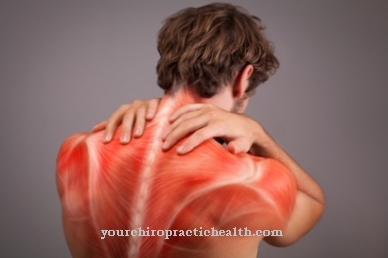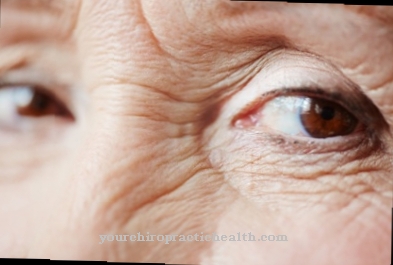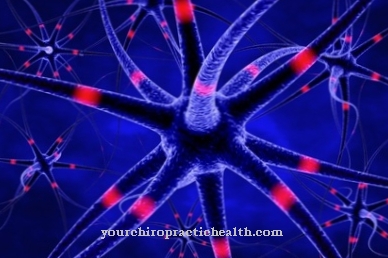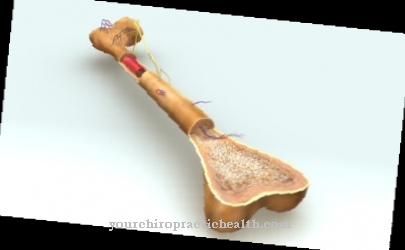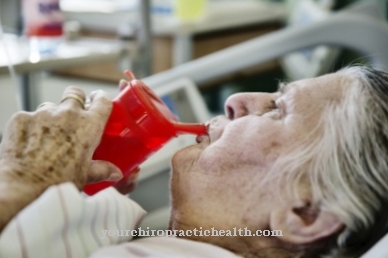Under Cellular respiration (internal breathing or. aerobic breathing) one understands all metabolic processes through which energy is obtained in the cells. Molecular oxygen serves as the oxidizing agent. This is reduced and in this way water is created from oxygen and hydrogen.
What is cellular respiration?

Cells take in glucose (grape sugar) for energy supply. The glucose is then broken down in the mitochondria or in the cytoplasm to water or carbon dioxide. As a result, the cells gain the compound adenosine triphosphate (ATP), a universal source of energy that is extremely important for many metabolic processes. Cellular respiration is divided into three steps:
- Glycolysis: Here one molecule of glucose is broken down into two molecules of acetic acid. Two C3 molecules are obtained from each molecule of glucose, which are transported into the mitochondria, where the next breakdown step takes place.
- Citric acid cycle: The activated acetic acid enters the citric acid cycle and is broken down in several steps. This releases hydrogen, which is bound to so-called hydrogen transport molecules. CO2 is produced as a by-product, which is then released by the cell and excreted through respiration.
- The end oxidation is also known as the respiratory chain, whereby the hydrogen obtained is burned into water and ATP is created.
A very large part of the energy can be used through this step-by-step process. A total of 36 ATP molecules are obtained from one molecule of glucose, which corresponds to an efficiency of over 40 percent.
Function & task
Every cell in the body has a nucleus in which the genetic information can be found. The cell is separated from the outside world by the cell membrane. This consists of tunnel proteins, glycoproteins, cholesterol, lecithin and fatty acids. An intact cell membrane is very important because the disposal of waste products or nutrition depends on it.
The vegetable fatty acids in the cell membrane also improve the exchange of substances. An excess of cholesterol or animal fat and protein solidifies the membranes and the cell structure as well as the boundary layers between the different tissues. This makes the exchange of substances more difficult and only an insufficient amount of oxygen and nutrients is brought to the cells.
Inside the cells are the mitochondria, which have their own genetic information and can also multiply. Body heat and body energy are obtained in the membranes of the mitochondria. If the energy production is disturbed, diseases such as cancer can occur.
Oxygen atoms or hydrogen ions can enter the cells via the air we breathe or the food chain. Due to various oxidation and reduction processes of oxygen and hydrogen, energy is generated. Electrons are brought to a low energy level with the help of co-enzymes, which releases energy. With the help of this energy, the protons can be pumped from the inside of the mitochondria into their intermembrane space and then flow back inside.
This creates ATP (adenosine triphosphate), a molecule that plays a central role in storing body heat and energy. Adenosine triphosphate can be called the center of energy metabolism. A cell has over a billion ATP molecules that are hydrolyzed or phosphorylated a thousand times a day. The energy that is released is required for various metabolic reactions.
If the coenzymes are destroyed in the respiratory chain, energy production collapses and an acidic environment occurs. As a result, the mitochondria leave the cell or can die and there is stagnation in energy production, i.e. insufficient heat production takes place. This can be seen in the run-up to cancer, for example, as a lower body temperature can be demonstrated in cancer patients.
Illnesses & ailments
Our body has an unimaginably large number of cells in which energy is produced. The exchange of energy, substances and information takes place via the cell membrane. Due to environmental toxins, proteins, animal fats, free radicals and acids, a normal supply of nutrients and oxygen is prevented, and the toxins cannot be disposed of properly. As a result, the cells' energy production is disrupted and the genetic information is damaged, which can lead to numerous diseases.
Incorrect diet, cigarette consumption, heavy metals, acidity, emotional stress or chronic illnesses lead to increased free radicals. These damage the body structures and lead to premature aging. Free radicals are molecules that either have too little or too many electrons. Therefore, they try to achieve a balance by wresting electrons from other molecules very radically. As a result, a chain reaction occurs in which molecules are destroyed or damaged.
Very often free radicals are so-called oxygen radicals, which trigger an oxidation process and destroy fats or enzymes. In addition, free radicals cause mutations in the mitochondrial or cell nucleus DNA and damage the connective tissue. They cause numerous chronic diseases such as high blood pressure, immune deficiency, Alzheimer's, Parkinson's, allergies, diabetes, rheumatism or arteriosclerosis.
Since the waste products are deposited, the transport of nutrients between the cell and blood vessels is more difficult because the free radicals network sugar proteins, proteins and all basic substances. This creates an environment for pathogens and the immune defense is favored. Since the body cannot cope with an excess of radicals, it needs help in the form of enzymes, Q10, various vitamins or selenium, which render the free radicals harmless and protect the body.

